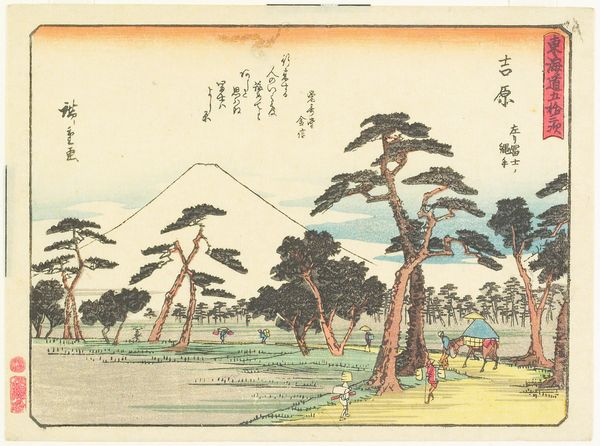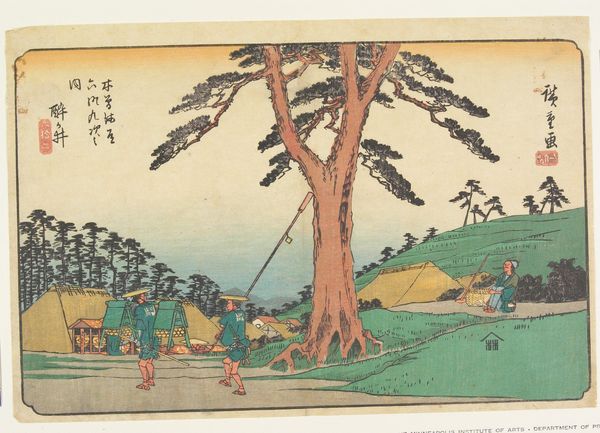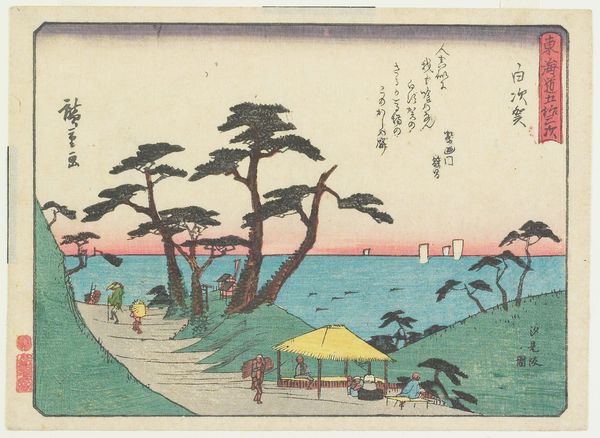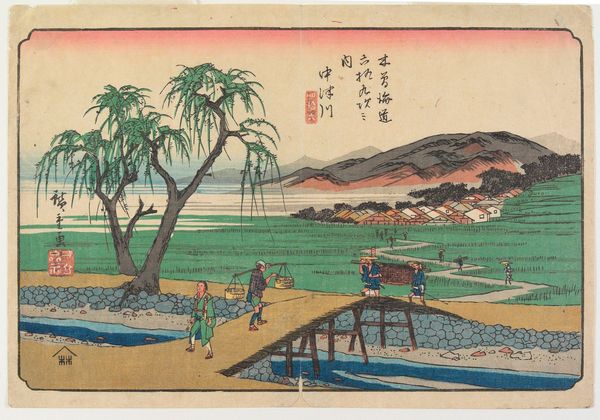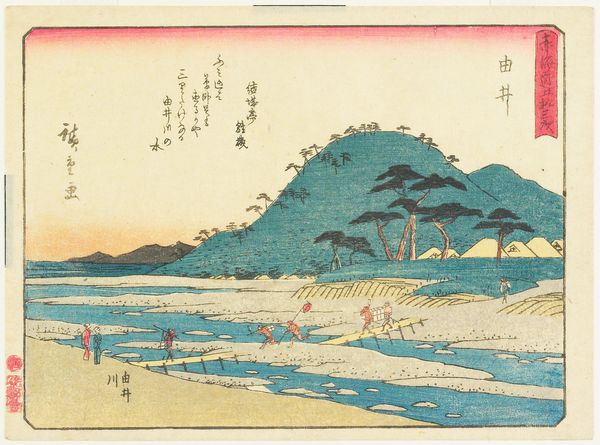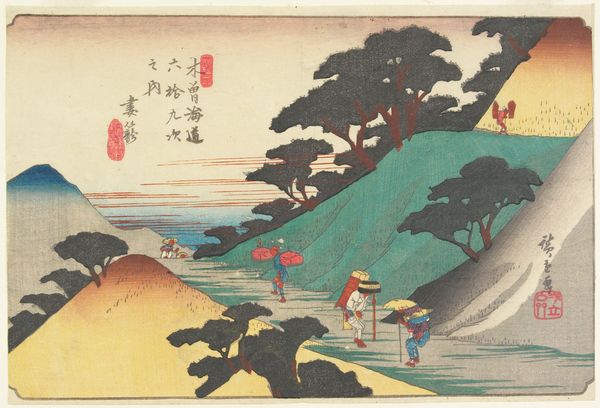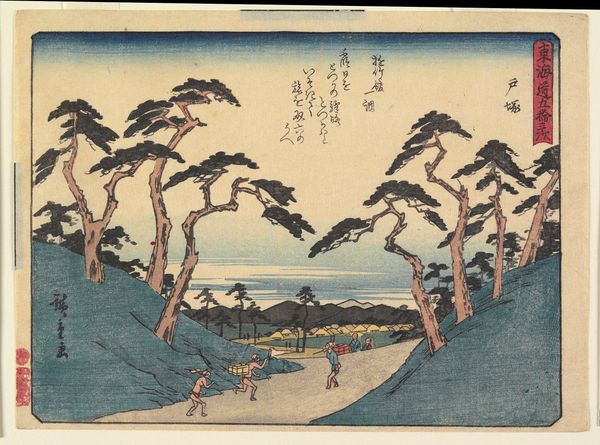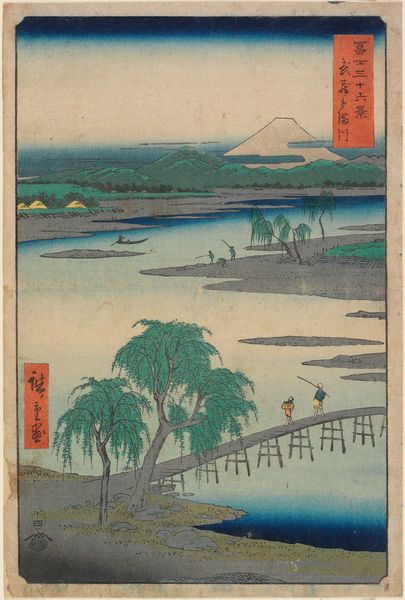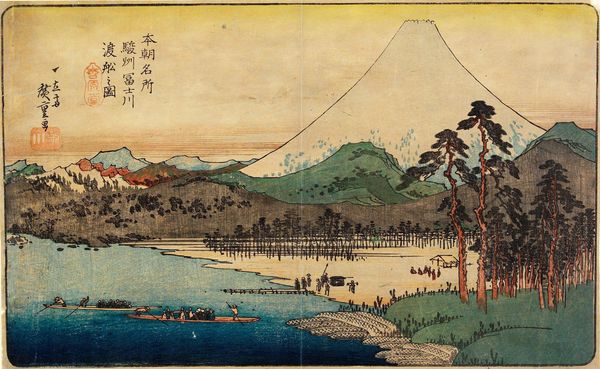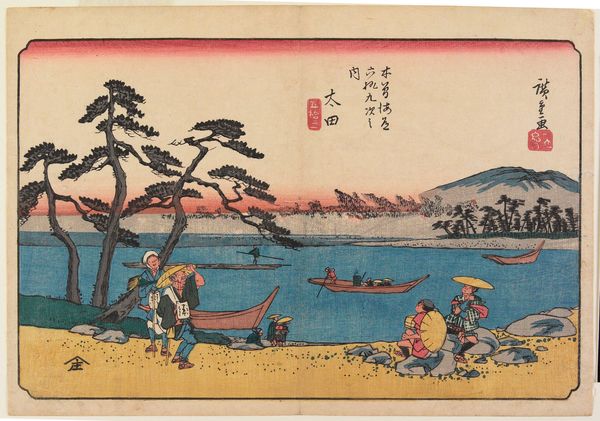
View of Mt. Fuji on Left Seen From the Street in Yoshiwara c. 1840 - 1842
0:00
0:00
print, ink, woodblock-print
#
ink painting
# print
#
asian-art
#
landscape
#
ukiyo-e
#
japan
#
ink
#
woodblock-print
#
orientalism
#
watercolor
Dimensions: 6 1/8 x 8 1/4 in. (15.5 x 20.9 cm) (image)6 5/8 x 8 13/16 in. (16.8 x 22.4 cm) (sheet)
Copyright: Public Domain
Curator: What strikes me immediately about this print is the tangible sense of distance and vastness despite its modest scale. Editor: It's beautiful. Let's delve into it. This is "View of Mt. Fuji on Left Seen From the Street in Yoshiwara" by Utagawa Hiroshige, created around 1840-1842. It's a woodblock print, currently residing at the Minneapolis Institute of Art. Curator: The symbolic weight of Mt. Fuji in Japanese art is undeniable, representing spiritual power, permanence, and the sublime. It functions almost like a constant, a cultural anchor in the face of societal change. Editor: Absolutely. And think about the laborious process of creating such a print. Each color would require a separate block, meticulously carved and aligned. The material reality—the wood, the ink, the paper, the hands that produced it—all contributed to its aesthetic value. Curator: The very placement of Fuji, viewed from this particular street, speaks volumes. It hints at the integration of the sacred within the everyday, and maybe also comments on desire and looking as the print consumer’s subjective experience. Editor: And consider Yoshiwara itself, then a bustling entertainment district. It places Fuji, that symbol of purity and permanence, in the context of commerce and pleasure, of consumption and desire. Curator: Perhaps the contrast highlights the transient nature of earthly delights compared to the enduring presence of the mountain. It also brings forth interesting dynamics when thinking of the laborers or makers who handled the art’s circulation or even Fuji’s prominence within the marketplace as commodity or art piece. Editor: Definitely. Plus, these prints weren’t just aesthetic objects; they were a vital part of the Edo period economy. These mass produced landscapes shaped not only Japan’s internal ideas and feelings, but global culture. Think about all that human activity, embedded in ink and wood. Curator: It allows one to rethink and re-evaluate conventional perceptions about mass produced art, the social constructs surrounding it and question its purpose and potential impact as more than decoration. Editor: So much contained in one image and from a great distance! Thanks for joining me in that journey. Curator: Indeed! A delightful venture into the iconographic and socio-economic layers beneath the surface of this print.
Comments
No comments
Be the first to comment and join the conversation on the ultimate creative platform.
